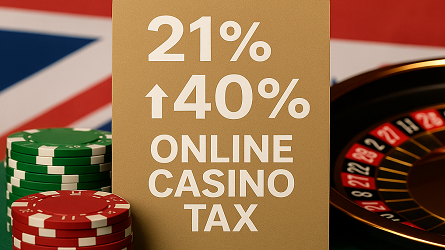The Ultimate Guide to Poker Chip Values 12 April 2025
Poker Chip Values
Whether you're playing in a friendly home game, trying your hand at a casino table, or gearing up for a high-stakes tournament, understanding poker chip values and buy-in structures is crucial. Chips aren't just placeholders for money—they're strategic tools that impact every decision at the table.
This in-depth guide covers everything from standard chip denominations and color codes to starting stacks, blind levels, and advanced chip management in tournaments like the WSOP.
🎯 What Are Poker Chip Values and Why Do They Matter?
In poker, chips act as currency, replacing real money to streamline gameplay. They provide structure and consistency while reducing the chance of confusion or disputes at the table.
🔍 Why Poker Chips Are Used
-
Speed: Makes betting and raising faster than handling cash
-
Security: Reduces risk of theft and cash errors
-
Organization: Keeps the game visually clean and consistent
-
Psychology: Chips can influence how players bet compared to real money
Understanding how poker chip values are assigned and used in different formats (cash games vs. tournaments) can significantly improve your decision-making and overall confidence.
💸 Poker Chip Values in Cash Games vs. Tournaments
Poker games typically fall into two categories: cash games and tournaments, each with its own approach to chip values.
💰 Cash Games
In a cash game, each chip has a direct cash equivalent.
Example:
-
A $1 chip = $1
-
A $5 chip = $5
You can cash out your chips for their full value at any time, making chip tracking essential for profit and bankroll management.
🏆 Tournaments
In tournaments, chips are not tied to real money. Instead, they act as scoring units.
-
Players receive a fixed starting stack (e.g., 5,000 chips)
-
These chips are used to measure your progress in the game
-
You cannot cash them out—you play until you're eliminated or win
🎨 Standard Poker Chip Colors and Denominations
Even though chip values may vary by region or game format, most games follow a commonly accepted set of colors and values.
| Color | Typical Value |
|---|---|
| White | $1 |
| Red | $5 |
| Blue | $10 |
| Green | $25 |
| Black | $100 |
| Purple | $500 |
| Yellow | $1,000 |
| Pink | $2,500 |
| Brown | $5,000 |
SEO Tip: Knowing poker chip colors and values is essential for players transitioning from casual games to formal settings.
🏠 Chip Colors in Home Games
In home games, you're free to customize the denominations. A good practice is to clearly display a chip value chart before starting. Example:
-
White: $1
-
Red: $5
-
Blue: $10
-
Green: $25
This flexibility lets you adjust stakes based on the group’s preferences.
🧮 Buy-Ins: The Gateway to the Game
A buy-in is the amount of money a player pays to enter a poker game. It determines both your starting stack and your potential prize pool in tournaments.
💼 Types of Buy-Ins
Cash Game Buy-In
-
Typically equal to the value of the chips you receive
-
Example: $100 buy-in = $100 worth of chips
Tournament Buy-In
-
Converts money into points or units (not cash-redeemable)
-
Includes an entry fee plus a contribution to the prize pool
-
Example: $100 buy-in = $90 to prize pool, $10 to host/venue
Knowing your buy-in structure helps manage your bankroll and plan long-term poker strategies.
🃏 The Ultimate Guide to Poker Chip Values and Buy-Ins
🧱 How to Build Starting Stacks for Different Games
A balanced starting stack ensures a fair and fun game for all players. Here’s how you might structure chips for a $100 buy-in in a cash game:
🎲 Sample Starting Stack:
-
10 white chips ($1 each)
-
4 red chips ($5 each)
-
2 green chips ($25 each)
This breakdown offers betting flexibility and keeps the game moving efficiently.
🔄 Blind Levels: Understanding the Flow of Tournament Play
In tournaments, blinds (forced bets) increase over time, applying pressure and forcing action. This makes chip stack management a vital part of your strategy.
📈 Blind Level Progression Example:
-
Level 1: Small blind 25, Big blind 50
-
Level 2: Small blind 50, Big blind 100
-
Level 3: Small blind 100, Big blind 200
As blinds rise, chip values shift from lower denominations to higher ones. This is when you’ll hear the term “coloring up”—replacing smaller chips with larger-value ones.
💼 Advanced Chip Strategy in High-Stakes Games
In professional or high-stakes games, large denominations (like $500+) are used to avoid clutter and streamline large bets.
Example Stack for a $10,000 Buy-In Game:
-
20 black chips ($100 each)
-
10 purple chips ($500 each)
-
5 yellow chips ($1,000 each)
Plaques and Special Chips
For amounts over $5,000, casinos often use plaques instead of chips, which are easier to handle and stack.
🧠 Strategic Use of Poker Chips
Poker chips aren’t just for betting—they offer psychological leverage:
-
Large stacks can intimidate opponents
-
Chip handling can signal confidence or nervousness
-
Observing stack sizes helps determine player aggression
Skilled players use stack sizes to dictate action and control the tempo of a game.
👶 Beginner Tips for Managing Poker Chips
New to the game? No worries—here are a few simple steps:
✅ Poker Basics Every New Player Should Know:
-
Know the value of each chip
-
Stack your chips neatly
-
Avoid splashing the pot (throwing chips in randomly)
-
Only act when it’s your turn
🎯 Start with Low Stakes
Playing at lower limits gives you a chance to learn without risking too much. Focus on understanding blinds, hand rankings, and betting structure.
📚 Frequently Asked Questions (FAQs)
❓ What are standard poker chip denominations?
Most commonly: White ($1), Red ($5), Green ($25), Black ($100), Purple ($500)
❓ How many chips should players get in a 10-player game?
A 500-chip set is ideal. A good mix:
-
150 white
-
200 red
-
100 green
-
50 black
❓ Can I assign custom chip values in home games?
Absolutely. Just make sure all players are aware of the values before starting.
❓ What’s the purpose of “coloring up”?
To reduce low-value chips as the game progresses and blinds increase, keeping the table clean and manageable.
🏁 Final Verdict: Why Chip Knowledge Wins Games
Whether you're a new player learning chip values or a seasoned grinder preparing for a major tournament, mastering the use of poker chips and buy-ins is key to long-term success.
From chip color codes to stack building strategies, this knowledge sets the foundation for making smarter bets, managing your bankroll, and gaining a competitive edge.
Want to win more games? Start by respecting the chips in front of you—they’re your tools, ammo, and strategy all rolled into one.
Lastest news
Most readed
Best Online Casinos for Real Money
What is the luckiest casino game
Must-Try Slots This Week
The 6 Highest Paying Online Casino
Set Your Limits and Stick to Them
Show more
















